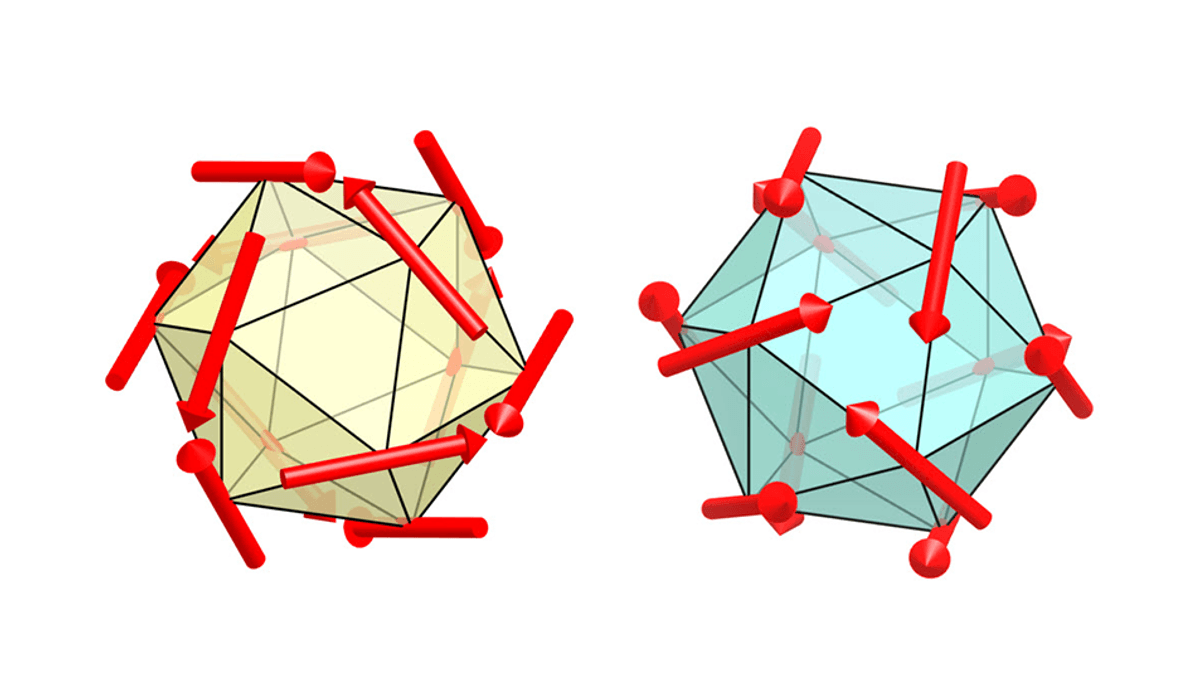
Quasicrystals are very interesting entities. They have ordered structures but they do not repeat, so they are – as the name suggests – almost like crystals, but not exactly. This difference is certainly not a disadvantage, since quasicrystals often showcase properties your common-or-garden material could only dream of. And this is the case for a truly unusual quasicrystal that is being studied by researchers in Japan.
This is the first time that the magnetic properties of this particular quasicrystal have been explored, and the research shows that they are quite unique. The team believes that the breakthrough is pushing the field of condensed matter physics and quasicrystal research into brand new territories. The researchers are confident that it could pave the way for new and more advanced electronic devices, and even magnetic refrigeration technologies.
The quasicrystal in question is made of gold, gallium, and terbium. One of the structures is an icosahedron – a 3D figure with 20 faces – as well as an approximant crystal (AC) that is cubic. Both of them are Tsai-types. These kinds of quasicrystals and approximants are made of four concentric shells with a tetrahedron at the very center. A tetrahedron is a pyramid shape in which all four faces are triangles.
Next up is the magnetism part. These quasicrystals don’t follow the classical Heisenberg model of ferromagnetism, and it is expected that their magnetic nano-patterns are whirls or vortices. The pattern for each tiny crystal is like many little magnetic poles winding around a central region. This resembles a tornado or a whirlwind, hence why it is described as “whirling magnetism”.
This might already seem quite complex, but we are just getting started. In the immortal words of Samuel L. Jackson in Jurassic Park: “Hold on to your butts”.
Depending on the number of available electrons per atom (the e/a ratio), the magnetic properties of these quasicrystals are wild. Above a ratio of 1.9, the crystal is a so-called spin glass, so all the magnetic moments of the atoms are randomly interacting.
Below that, things get interesting. Around a ratio of 1.8, the material has strong whirling ferromagnetism – the magnetic moments all align, and the crystal is magnetized and remains so.
But if the ratio falls below 1.7, a third thing happens. The structure becomes a whirling antiferromagnet. Its magnetic moments all cancel out, delivering zero total magnetism.
The oddities all happen at just a handful of degrees above absolute zero. It shows that magnetic behavior is far from simple for both the icosahedral quasicrystals (iQCs) and their AC counterparts.
“These results offer important insights into the intricate interplay between magnetic interactions in non-Heisenberg Tsai-type ACs. They lay the foundation for understanding the intriguing properties of not only non-Heisenberg ACs but also non-Heisenberg iQCs that are yet to be discovered,” senior author Professor Ryuji Tamura, from Tokyo University of Science, said in a statement.
Quasicrystals such as this are considered potential units for memory storage in future tech, so understanding their magnetic behavior is paramount to actually using them for such devices.
The study is is published in the journal Materials Today Physics.
Source Link: Oddball Quasicrystals Dramatically Change Their Magnetic Properties With Changing Electrons